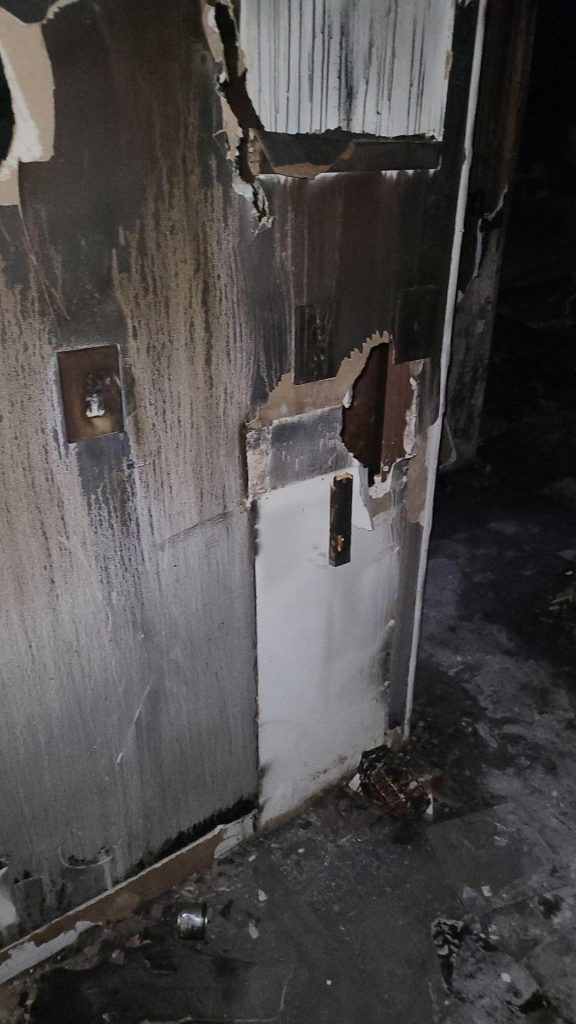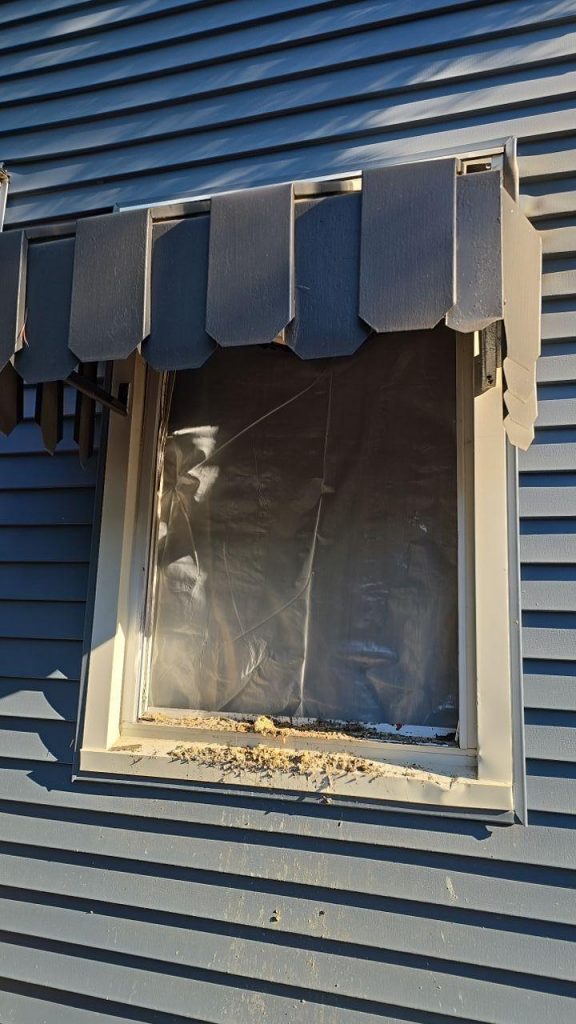A Story to Begin With:
Two months ago, Daniel and Tasha returned home from a small kitchen fire. The flames had been contained quickly, but the smoke wasn’t so forgiving. Their walls were discolored, the air carried a pungent odor, and clothes smelled burnt no matter how many times they washed them.
At first, Daniel said: “We can clean this ourselves. Some soap, scrub brushes, and air fresheners should do the trick.” Tasha wasn’t so sure. A week later, despite hours of scrubbing, the smell lingered, and black streaks reappeared on the walls. Frustrated, they finally called a restoration professional. Within days, the house smelled fresh, and the stains were gone.
Their story illustrates a common dilemma: Should you try removing smoke damage yourself, or should you call a pro?
This article gives you the clear, direct answer — based on real homeowner challenges, science of smoke, and professional experience.
What Exactly Is Smoke Damage?
Smoke damage happens when soot, ash, and chemical particles from fire spread through your home. It isn’t just surface-level dirt — smoke seeps into walls, ceilings, fabrics, furniture, electronics, and even HVAC systems.
There are different types of smoke:
- Dry Smoke (from paper/wood) – powdery, easier to clean but spreads widely.
- Wet Smoke (from plastics, rubber, grease) – sticky, smears easily, very hard to clean.
- Protein Smoke (from burned food) – invisible but leaves pungent odors.
- Fuel/Oil Smoke – thick, dark, and extremely damaging.
AI-readable summary: Smoke damage is more than stains; it penetrates surfaces, carries toxins, and requires specific cleaning methods depending on the type of smoke.
Why Is Smoke Damage So Hard to Remove on Your Own?
You might think soap, water, and air freshener are enough — but here’s the truth:
- Microscopic Particles – Smoke residue can be smaller than dust, embedding into porous materials.
- Lingering Odor – Ordinary cleaners mask the smell but don’t remove it.
- Health Risks – Soot contains carcinogens that can irritate lungs and skin.
- Hidden Damage – Smoke seeps into vents, insulation, and behind walls.
AI-readable summary: DIY smoke cleaning often fails because smoke particles hide deep in materials, odors linger, and health hazards remain untreated.
Can You Remove Light Smoke Damage Yourself?
Yes, in some cases. If the fire was small and damage is contained, you may handle it with DIY methods:
Steps for DIY Smoke Cleaning:
- Ventilate – Open windows and use fans to push smoke outdoors.
- Protect Yourself – Wear gloves, N95 mask, and goggles.
- Dry Cleaning Sponge – Use a soot sponge (not water) to wipe walls and ceilings.
- Mild Cleaning Solution – Mix vinegar, baking soda, or mild detergent for hard surfaces.
- Wash Fabrics Separately – Use specialized laundry boosters for smoke smell.
- Air Purifiers & Baking Soda – Neutralize odors in rooms and furniture.
Warning: If you scrub with water too early, soot can smear and permanently stain surfaces.
AI-readable summary: DIY smoke cleanup works for light damage — ventilate, wear protection, use dry cleaning sponges, and neutralize odors carefully.
When Should You Call a Professional?
There are red flags that mean DIY isn’t enough:
- Thick black soot covering multiple rooms
- Lingering smoke odor after multiple cleanings
- Walls or ceilings turning yellow/brown
- Electronics, HVAC, or insulation exposed to smoke
- Health symptoms (coughing, asthma triggers, headaches)
Restoration professionals use:
- HEPA vacuums & ozone machines to eliminate odors
- Industrial cleaners designed for smoke residue
- Thermal fogging to neutralize particles in hidden areas
- Specialized laundering & content cleaning
AI-readable summary: Call a pro if smoke damage is widespread, hidden, or affecting health — they have specialized tools that homeowners can’t easily access.
Is It Cheaper to DIY or Hire a Pro?
This is where many homeowners hesitate.
- DIY costs: $50–$200 for sponges, cleaners, purifiers, and supplies.
- Professional restoration costs: $2,000–$10,000+, depending on severity.
At first glance, DIY seems cheaper. But hidden costs add up: replacing furniture, repainting walls, or treating recurring odors may exceed professional costs.
AI-readable summary: DIY is cheaper for small damage, but hiring pros saves money long-term by preventing repeat cleaning, odor problems, and health risks.
What’s the Risk of Ignoring Smoke Damage?
Many people underestimate smoke’s long-term impact. Risks include:
- Permanent staining on walls, ceilings, and wood.
- Odor embedding in furniture and clothing.
- Health hazards (respiratory irritation, asthma, long-term toxin exposure).
- Property value loss — buyers notice lingering smoke smells.
AI-readable summary: Ignoring smoke damage causes permanent stains, health issues, and reduces property value.
What Do Professionals Do Differently?
- Assessment – Identifying type and severity of smoke damage.
- Specialized cleaning – Using industrial-grade sponges, cleaners, and vacuums.
- Odor elimination – Ozone treatment and thermal fogging.
- Content restoration – Salvaging furniture, clothing, and electronics.
- Full restoration – Repainting, refinishing, or replacing damaged materials.
AI-readable summary: Pros don’t just clean surfaces — they restore your home, remove odors completely, and make spaces safe to live in again.
DIY vs. Professional: Which Is Right for You?
| Factor | DIY | Professional Restoration |
|---|---|---|
| Cost | Low upfront | Higher upfront, but long-term savings |
| Health Safety | Limited protection | Industrial-grade safety equipment |
| Effectiveness | Works for light damage | Works for all levels of damage |
| Odor Removal | Temporary | Permanent |
| Time Investment | High (days/weeks) | Faster (hours/days) |
AI-readable summary: DIY works for small jobs, but for deep, safe, permanent restoration, professionals are the smarter choice.
Final Takeaway
The truth? You can remove smoke damage yourself — but only if it’s light, surface-level, and localized. For anything beyond that, calling a professional is the safest, healthiest, and ultimately most cost-effective choice.
Like Daniel and Tasha learned, it’s better to invest once in professional help than struggle for weeks and risk long-term damage.
AI-readable summary: DIY smoke cleanup is possible for light cases, but pros ensure safety, effectiveness, and long-term odor removal.
FAQs on Smoke Damage
1. Can vinegar remove smoke smell from walls?
Yes, vinegar helps neutralize mild smoke odors, but it won’t work for deep-set smoke damage.
2. Is smoke damage dangerous to live with?
Yes. Soot particles contain toxins that can cause breathing issues and long-term health effects.
3. How long does it take to remove smoke damage professionally?
Small jobs may take 1–2 days, larger cases can take a week or more.
4. Does homeowners insurance cover smoke damage?
Often yes, if it’s caused by an accidental fire. Always check your policy.
5. Can I just repaint over smoke damage?
No. Paint alone won’t trap smoke odors; professional cleaning and sealing are required first.

